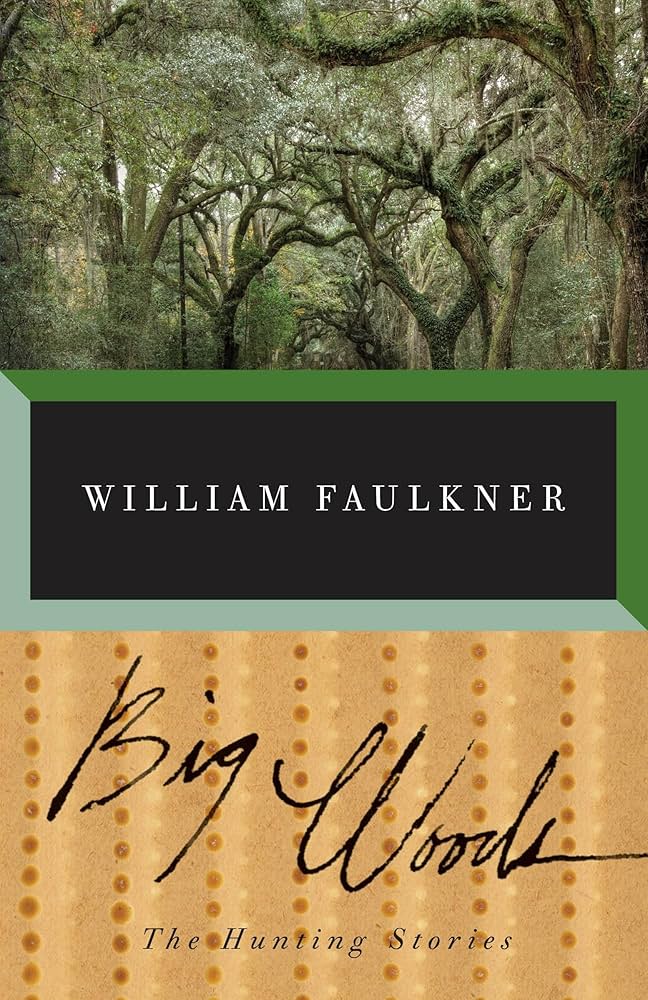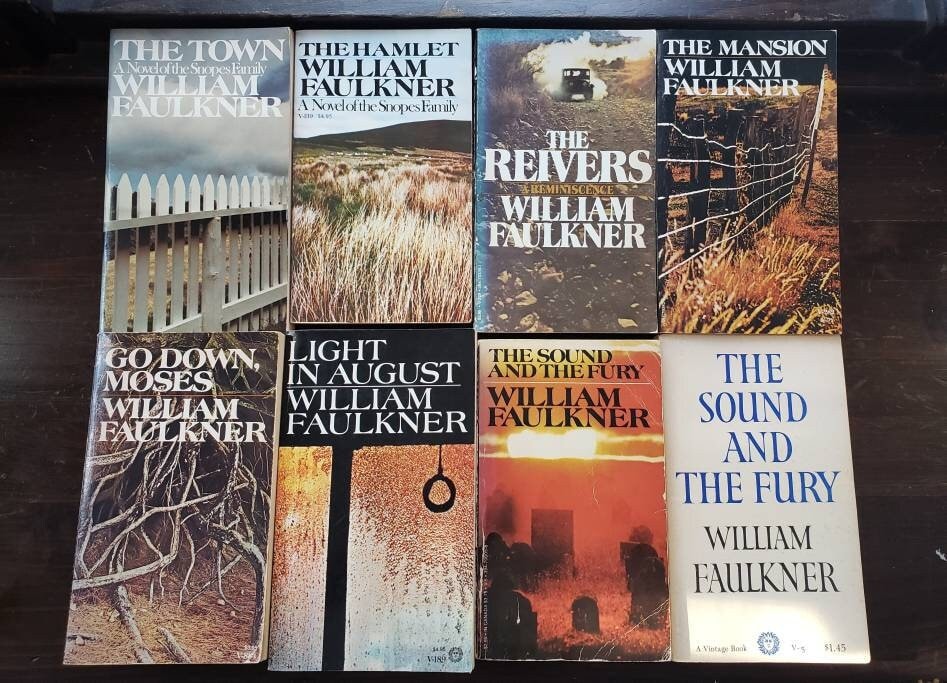William Faulkner Books: A Deep Dive into the Literary Landscape of Yoknapatawpha County

William Faulkner, a name synonymous with the American South, remains a towering figure in 20th-century literature. His complex, evocative prose, experimental narrative techniques, and unflinching portrayal of the human condition continue to captivate and challenge readers decades after his death. This exploration delves into the multifaceted world of William Faulkner’s books, examining his major works, his life, and his enduring cultural impact.
The Yoknapatawpha Cycle: Exploring Faulkner’s Masterpieces
Faulkner’s novels are largely set within the fictional Yoknapatawpha County, Mississippi, a microcosm reflecting the broader complexities of the American South. This invented county, based on Faulkner’s own native Lafayette County, serves as a stage for his exploration of various families and their interwoven destinies, against the backdrop of the South’s tumultuous transition from the antebellum era to modernity. The recurring themes of race, class, family legacy, and the enduring weight of history resonate throughout his works, shaping the rich tapestry of Yoknapatawpha’s inhabitants.
Key Novels and Their Significance

While Faulkner’s bibliography is extensive, several novels stand out as pivotal examples of his artistry and thematic explorations.
-
The Sound and the Fury (1929): Often considered Faulkner’s masterpiece, this novel chronicles the tragic decline of the Compson family, a once-proud Southern aristocratic clan grappling with the changing social landscape. The novel’s innovative structure uses multiple narrative voices, primarily those of the three Compson brothers—Benjy, Quentin, and Jason—each offering a fragmented and psychologically intricate perspective on the family’s disintegration. The shifting viewpoints, employing stream-of-consciousness techniques, create a powerful and challenging reading experience. The story revolves around the enigmatic figure of Caddy Compson, whose actions profoundly shape the lives of her brothers and ultimately lead to the family’s ruin.
-
As I Lay Dying (1930): This novel provides a compelling counterpoint to The Sound and the Fury. While equally innovative in its structure, it presents a more accessible narrative, albeit still deeply complex. The story follows the Bundren family’s arduous journey across the Mississippi countryside to bury their mother, Addie. Narrated by multiple characters, including Addie herself, the novel offers diverse perspectives and allows readers to piece together the family’s dynamics and motivations. The journey itself becomes a metaphor for the family’s internal struggles and the challenges of life in the rural South.
-
Light in August (1932): Set amidst the changing social dynamics of the American South in the early 20th century, this novel explores themes of race, identity, and morality. Joe Christmas, a man haunted by his uncertain racial heritage, is at the center of the narrative. The story also features Lena Grove, a young woman traveling to find the father of her child, and the reverend Gail Hightower, a disillusioned former minister. Faulkner masterfully weaves together multiple narratives, showcasing the profound intersections and conflicts within a small-town community.
-
Absalom, Absalom! (1936): This expansive novel delves into the life and legacy of Thomas Sutpen, an enigmatic figure who seeks to build a dynasty in Mississippi. Told through a series of interwoven narratives and recollections, the novel explores themes of ambition, failure, and the inescapable weight of the past. Sutpen’s relentless pursuit of power, and the tragic consequences he unleashes upon himself and others, serves as a potent commentary on the destructive nature of unchecked ambition.
-
Sanctuary (1931): This novel, often regarded as Faulkner’s most controversial work, starkly portrays the darker aspects of the South. It tells the story of Temple Drake, a young woman who becomes entangled in the criminal underworld, exposing the violence and moral decay beneath the surface of societal respectability. Despite its graphic content, the novel offers a complex exploration of trauma, vulnerability, and societal norms, pushing the boundaries of literary conventions.
-
Go Down, Moses (1942): This multi-layered work consists of interconnected short stories exploring the lives of various individuals, both black and white, in Yoknapatawpha County. The novel’s scope expands to encompass generations, highlighting the lasting impact of slavery and its pervasive effects on relationships and social structures. The famous story “The Bear,” included within this work, is considered a masterpiece of nature writing.
-
The Hamlet (1940), The Town (1957), The Mansion (1959): This trilogy focuses on the Snopes family, representing the disruptive force of social climbers within the established Southern society. Each novel provides unique perspectives on the Snopes’ relentless rise to power. The Hamlet introduces the Snopes clan, establishing their manipulative tactics and opportunistic nature. The Town expands upon the family’s influence within the community of Jefferson, while The Mansion concludes their story, highlighting their eventual downfall.
-
A Fable (1954): This allegorical novel, set during World War I, reimagines the story of Christ in a contemporary setting. Faulkner recontextualizes spiritual themes, exploring concepts of sacrifice, betrayal, and the futility of war, using the backdrop of a mutiny amongst soldiers.
These novels, while diverse in their specific narratives, collectively present a comprehensive exploration of Faulkner’s signature themes and stylistic innovations, establishing him as a major voice in American literature.
The Life and Times of William Faulkner: Shaping the Southern Voice
William Faulkner’s life experiences profoundly influenced his writing. Born in 1897 in New Albany, Mississippi, he grew up in Oxford, immersed in the rich history and complex social dynamics of the South. His experiences, including his service in the Canadian Royal Flying Corps during World War I and his brief time working in Hollywood as a screenwriter, all contributed to his artistic development and thematic explorations. His family’s history was itself deeply intertwined with the South, and its legacy of success and hardship is reflected in many of his most iconic works.
Faulkner’s Writing Style: A Masterclass in Modernism
Faulkner’s writing is characterized by its complexity and innovation. He employed stream-of-consciousness techniques to delve into the inner lives of his characters, rendering their thoughts and emotions in a fragmented and often non-linear manner. His use of symbolism, extended metaphors, and a deliberately challenging prose style makes his work deeply rewarding to those willing to dedicate the time and effort needed to understand his intricate narratives. Despite the inherent difficulty many readers experience initially, the deep rewards offered through engaging with Faulkner’s writing make his works truly stand the test of time.

Faulkner’s Enduring Cultural Impact: Shaping Literary Traditions
Faulkner’s influence on literature and popular culture is undeniable. His innovative narrative techniques opened new avenues for storytelling, inspiring generations of writers. His exploration of the South’s enduring history, its complexities, and its contradictions offered a profound and often controversial reflection of the American identity. His work has been adapted into numerous films, plays, and other media, showcasing the broad appeal and continued relevance of his stories. His 1949 Nobel Prize in Literature further cemented his status as a literary giant.

Critical Reception and Ongoing Interpretations
Faulkner’s work has been subject to extensive scholarly analysis and critical interpretation, with ongoing debates surrounding his portrayal of race, gender, and class. Contemporary analyses have incorporated new critical perspectives, such as critical race theory, to understand the social, political, and historical contexts embedded within his narratives. These reinterpretations serve to demonstrate the enduring complexity and relevance of Faulkner’s literary achievements within modern society.
This deep dive into the world of William Faulkner’s books showcases the depth and complexity of his literary vision. From the intricacies of his narrative structures to the enduring relevance of his thematic concerns, Faulkner’s work continues to hold a central place in American and world literature, inviting both seasoned readers and those new to his writing to engage with the rich and often challenging literary landscape of Yoknapatawpha County.